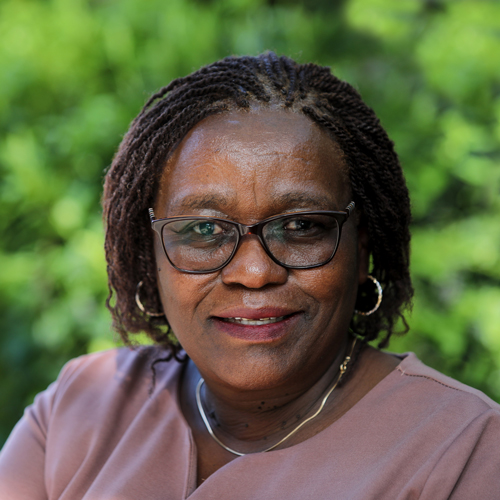Barbra (18) of Epworth high-density community lost her life while conducting a clandestine abortion after her boyfriend refused responsibility. She resorted to a backyard abortion by inserting a stick into her womb, and she bled profusely, resulting in her death.
Another woman in Chitungwiza – Rosemary (not her real name) said she is now bedridden after taking some concoctions to induce her three months old pregnancy after her husband told her that it was unplanned.
Rosemary was still breastfeeding an eight-month old baby when she suddenly realised that she was pregnant.
She got the pregnancy inducing concoction from a self-styled traditional healer whom she later failed to locate after experiencing challenges.
“I lost the baby and my uterus was later removed at a local hospital after I developed an infection because I delayed in seeking medical care due to fear that I might be arrested but that was not the case. I narrated my case and I was treated with confidentiality, but I’m still suffering from back pains and I can no longer do my chores. I regret taking this move because I can longer have a baby in future and chances are high that my husband can marry another wife,” she said with tears rolling on her cheeks.
However, some men say contraception methods are limited.
“We understand the dilemma faced by our women because some of them can even fall pregnant while taking their contraceptives due to hormonal issues among or they forget to take them but as men we only have two or three choices.
“The withdrawal method, condom and vasectomy which the majority are afraid of, resulting in its low uptake. We need more choices because we are often blamed when women committing these abortions face some issues and some end up committing suicide,” said Mr Hardlife Mlambo of Mabvuku.
Opportunity Makanga the Director of Mwanasikana Wanhasi said, unsafe abortions are rife among youth and adults in Zimbabwe owing to high medical costs, restrictive abortion laws among others.

“Inadequate youth friendly clinics that offers sexual reproductive health services, negative attitudes by service providers towards patients, lack of knowledge on how and where to seek services, having fewer contraceptive choices, donor fatigue and over reliance on social media to get medical information bring negative consequences among youths,” she said.
The 2020 #VoiceandChoice Barometer notes that 24% of all pregnancies in Southern Africa end in abortion. Although no Southern African country totally bans abortion, most conditions under which women can obtain abortions remain restrictive.
According to the Termination of Pregnancy Act of 1977, it is illegal to terminate a pregnancy unless it has been sanctioned by Government authorities among them, the court, which has to confirm that the intercourse was unlawful.
Community members applauded a recent ruling by Justice Takuva which provides access to safe and legal abortion for abused children below the age of 18 and marital rape. This ruling is awaiting confirmation by the Constitutional Court .
Justice Takuva notes that, Section 81 of the Zimbabwe Constitution provides that every child has a right to be protected from sexual exploitation therefore any pregnancy arising from such sex has to be treated as unlawful intercourse for the purpose of section 2(1) of the Act.
However, there are several incidents where abortion was supposed to be legalised by the courts and the draconian procedures have led to some ending up giving birth and some succumbing due to pregnancy related complications.
A typical example of the case of Mildred Mapingure of Chegutu who was raped by Courage Chamboko during an armed robbery in 2006, still haunt her for the rest of her life after the abortion was delayed due to court processes and she is now looking after the child.
Mapingure is among hundreds of women in Zimbabwe who are giving birth against their will because it is illegal to abort.
Mrs Edinah Masiyiwa the Executive Director for Women’s Action Group said, Mapingure’s situation qualified her for an immediate abortion but, she still could not access the services.
“The situation is even more complicated for the majority of women in Zimbabwe who often resort to backstreet and unsafe abortions when they find themselves pregnant and are not prepared to give birth. I applaud the Government for the recent action of allowing abortions in marital rape cases and for children who fall pregnant before the age of 18 but we still pray for the complete liberations of abortions to save lives of women and girls,” she said.

Mrs Masiyiwa said after, noticing that so many women were dying due to unsafe and illegal abortion the Ministry of Health and Child Care gave them the right to access post-abortal care at any health institutions without being questioned.
She said, the current statistics have shown that maternal mortality rate in Zimbabwe is at 362 per 100 000 live birth and with these interventions including law reforms they hope for a reduction to 70 deaths per 100 000 births by 2030.
Zimbabwe maternal mortality rate for 2020 was 357.00, a 9.16% decline from 2019.
Maternal mortality ratio is the number of women who die from pregnancy-related causes while pregnant or within 42 days of pregnancy termination per 100,000 live births.
Shamwari Yemwanasikana Executive Director Ekenia Chifamba called on the public and stakeholders to start conversing on abortion in Zimbabwe and its implications on the country’s maternal mortality rate.

“There are already calls by the civic organisations and other stakeholders to look into the Termination of Pregnancy Act of 1977 and align it with existing constitutional guarantees that speaks to the advancement of women’s rights. Backstreet or illegal abortions have become a major public health concern in Zimbabwe, with reports pointing to an increase in unsafe abortions, straining the ailing health sector,” she said.
According to the Demographic Health Survey, 30 percent of maternal mortality are due to unsafe abortions.
Health professionals say that the figures a just a tip of the iceberg of the number of women opting for unsafe abortions in a desperate move to manage unplanned pregnancies.
The Ministry of Health and Child Care says abortion is a major public concern which has led to high maternal mortality rate in Zimbabwe and is making efforts to increase access to and improve post abortion care in order to reduce maternal mortality.
However, ongoing economic insecurity has limited the health system’s capacity to provide these services.
Section 76 (1) of the Constitution confers upon every citizen and permanent resident of Zimbabwe the right to basic health care services including reproductive health care services.
According to the World Health Organisation, 23 000 women die from unsafe abortions yearly and tens of thousands experience complications globally.
Incidences of abortion
According to Guttmacher Institute 2016, an estimated 65,300 induced abortions occurred in Zimbabwe. This translates to a rate of 17 abortions for every 1,000 women aged 15–49.
Zimbabwe has one of the lowest abortion rates in Sub-Saharan Africa. In Eastern Africa, which includes Zimbabwe, the regional abortion rate is nearly double, at 34 per 1,000 women aged 15–44.
Abortion rates in Zimbabwe vary greatly across the country. The highest rates are in the Mashonaland provinces and Harare (21 per 1,000 women aged 15–49) and lowest in the Manicaland and Masvingo provinces (12 per 1,000 women).
Provisions Of Post Abortion Care
Of the estimated 25,200 women receiving facility-based post abortion care in 2016, about half were treated for complications related to abortions (many of which were unsafe), and half were treated for complications related to late miscarriage.
The vast majority (85%) of post abortion care was provided in public health facilities. Half of these cases were treated at district hospitals and one-third at larger, central hospitals.
Among women treated for post abortion complications in 2016, 78% had mild or moderate complications and 19% had severe complications. Three percent died or nearly died from complications.
Contraception and Unintended pregnancy
Most women who have an abortion do so because they become pregnant when they do not intend to. In 2016, 40% of pregnancies in Zimbabwe were unintended and one-quarter of unintended pregnancies ended in abortion.
Zimbabwe has the highest rate of modern contraceptive use in Sub-Saharan Africa, likely due to the government’s robust family planning program. Two-thirds (66%) of married women and sexually active unmarried women in Zimbabwe used a modern contraceptive method in 2015. Nevertheless, one in 10 married women and two in 10 sexually active unmarried women reported wanting to avoid a pregnancy but were not using any contraceptive method.
What can be done
- Broaden the circumstances under which abortion is legally permitted, and educate health care professionals and the public about legal provision in order to reduce the number of clandestine and unsafe procedures.
- Ensure the availability of safe, legal abortion services and post abortion care in order to reduce ill health and death from unsafe abortion. Unsafe abortion can result in severe complications, as well as high social and economic costs to women, their families and the health care system. Despite the low national abortion rate, complications from unsafe abortion in Zimbabwe, along with critical gaps in the provision of post abortion care and disparities in access to treatment, contribute to maternal injury and likely to death.
- Increase the availability and use of WHO-recommended post abortion care methods by ensuring facilities have adequate training, supplies and equipment. Primary health centres should be stocked with adequate supplies of misoprostol. A wide range of providers, including nurses, should be trained and supported to provide both misoprostol and manual vacuum aspiration.
- Increase domestic funding to ensure public health facilities have the resources they need to provide post abortion care free of charge and fully implement the National Guidelines for Comprehensive Post abortion Care in Zimbabwe.
- Young girls, women and couples that needs for contraception should be assisted timely to avoid unintended pregnancies and the unsafe abortions.
- Family planning programs should reach unmarried young women, poor women and women in rural areas.



